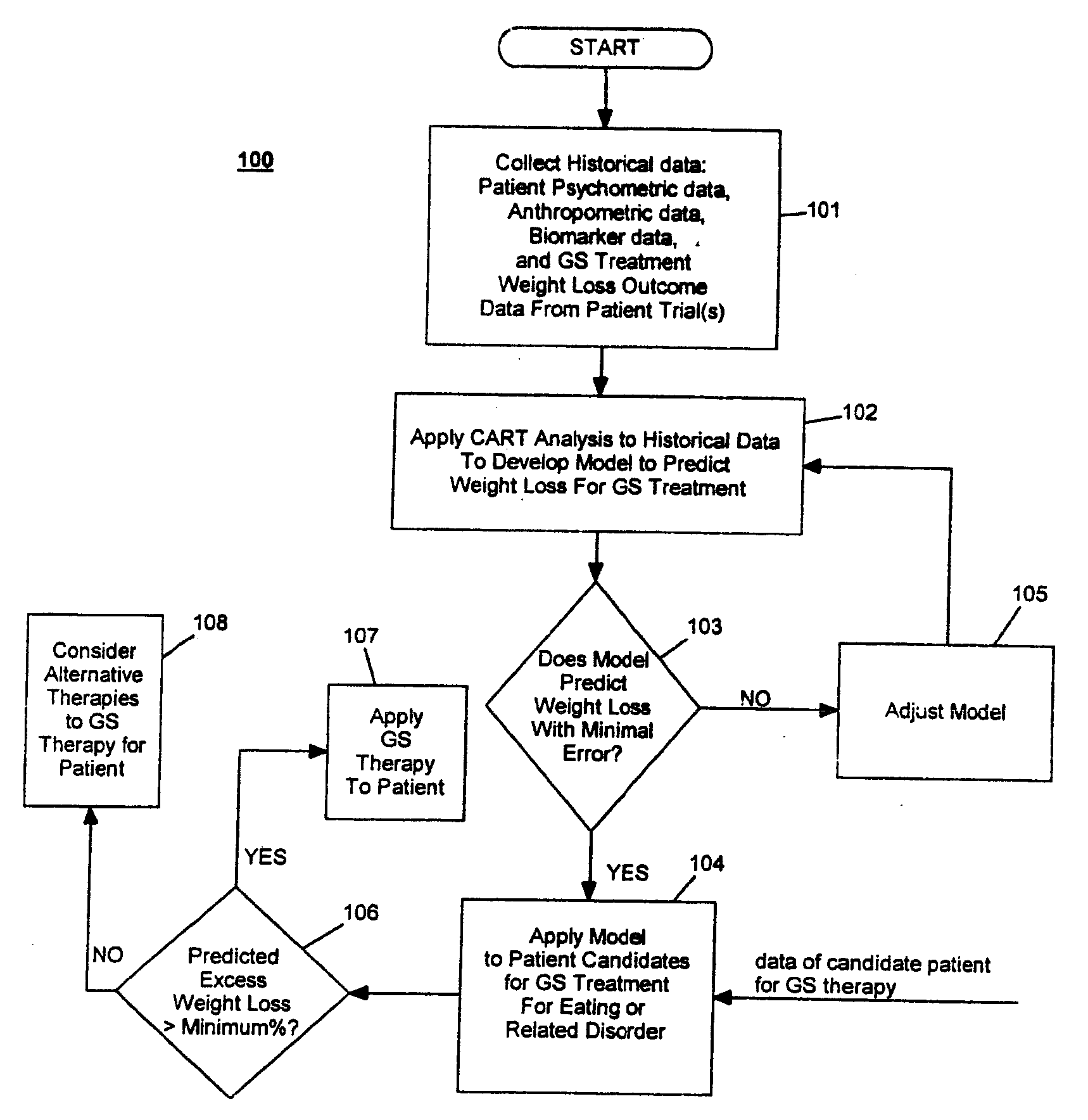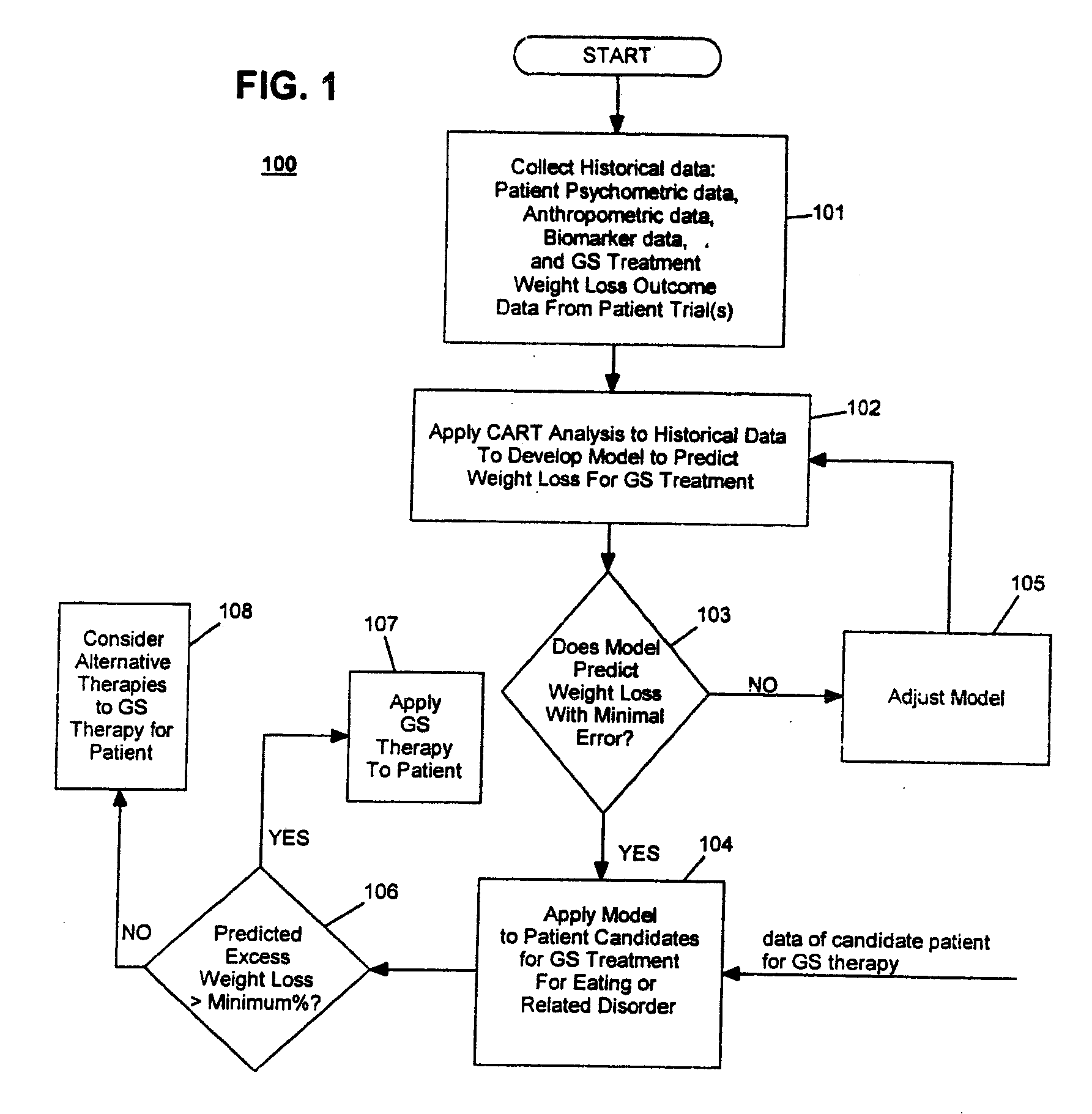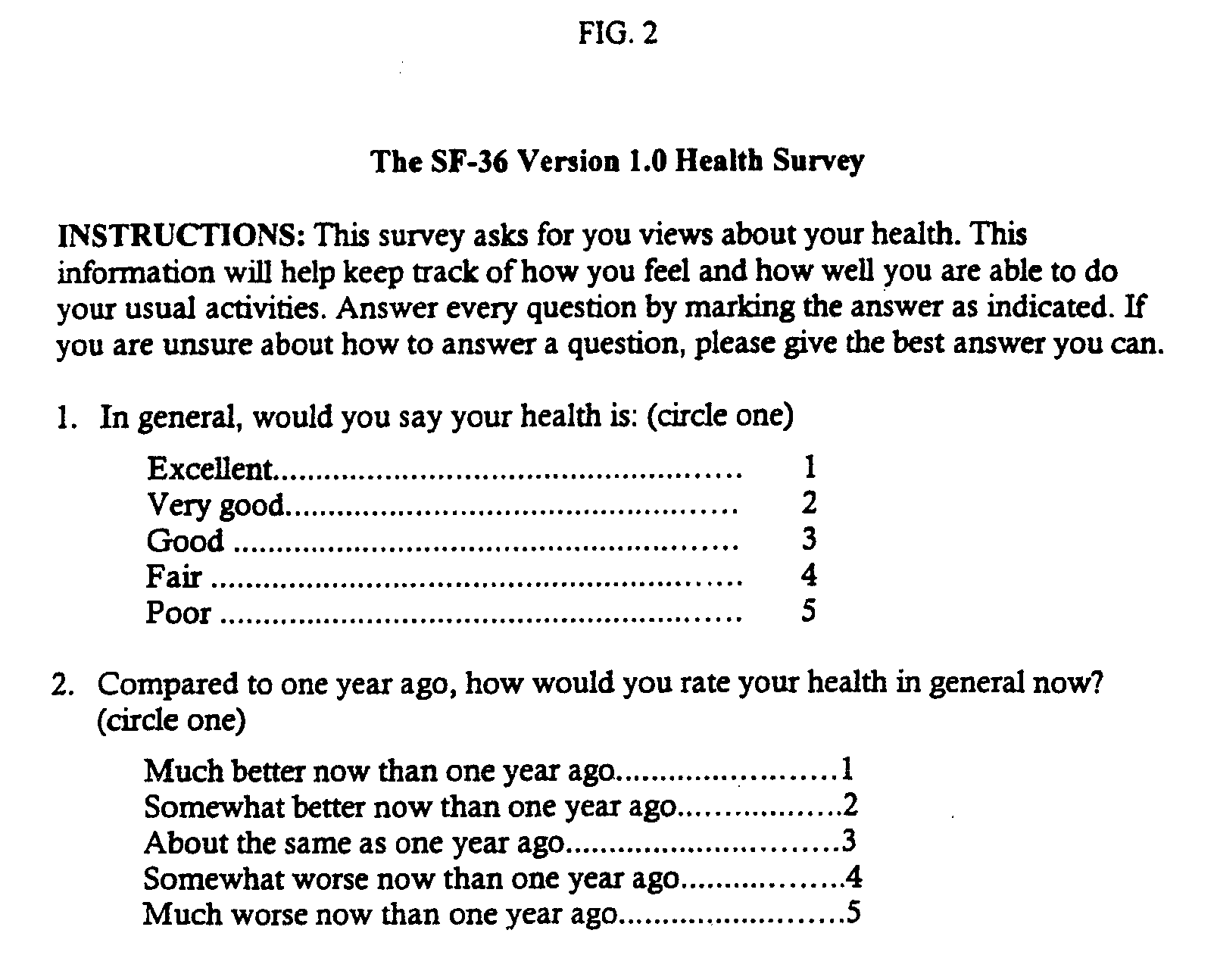Method for Screening and Treating Patients at Risk of Medical Disorders
- Summary
- Abstract
- Description
- Claims
- Application Information
AI Technical Summary
Benefits of technology
Problems solved by technology
Method used
Image
Examples
example 1
Development / Validation of Predictive Model
[0060] A. Data Description
[0061] In one embodiment, the CART predictive screening model is estimated and validated using baseline and weight change follow-up data on 252 of 279 implantable gastric stimulation patients implanted in the course of four treatment trials conducted in Europe and the United States. Apparatus for stimulating neuromuscular tissue of the gastrointestinal tract and methods for installing the apparatus to the neuromuscular tissue and therapeutic techniques for operating the apparatus as applied to these patients are indicated in Table 1 below. Further details on how to perform the implantable gastric stimulation treatment are described in U.S. Pat. No. 5,542,776 B1 to P. Gordon and D. Jenkins, which descriptions are incorporated herein by reference.
[0062] Table 1 below provides brief descriptions of these trials and their participants. The study samples are predominantly middle aged and female. Primary inclusion crit...
example 2
Performance of Predictive Model on New Patients
[0174] The performance of the CART predictive screening algorithm described in Example 1 was evaluated on new patients, i.e., patients who were not among the subjects used in development and validation of the predictive model. These included seventeen patients (N=17) implanted after the development of the CART predictive screening model described in Example 1, as well as seven patients (N=7) for whom baseline and follow-up data were only obtained from clinical study sites after the development of the predictive model. Two additional new subjects having ages less than 25 and BMI's greater than 45 were excluded from the analysis given the unusual combination of youth and very severe obesity. Less than 1% of subjects in the 252 patient development sample had this combination of youth and very severe obesity, and the screen is not expected to perform well in this subpopulation until further data are acquired on similar subjects.
[0175] The...
PUM
 Login to View More
Login to View More Abstract
Description
Claims
Application Information
 Login to View More
Login to View More - R&D
- Intellectual Property
- Life Sciences
- Materials
- Tech Scout
- Unparalleled Data Quality
- Higher Quality Content
- 60% Fewer Hallucinations
Browse by: Latest US Patents, China's latest patents, Technical Efficacy Thesaurus, Application Domain, Technology Topic, Popular Technical Reports.
© 2025 PatSnap. All rights reserved.Legal|Privacy policy|Modern Slavery Act Transparency Statement|Sitemap|About US| Contact US: help@patsnap.com



